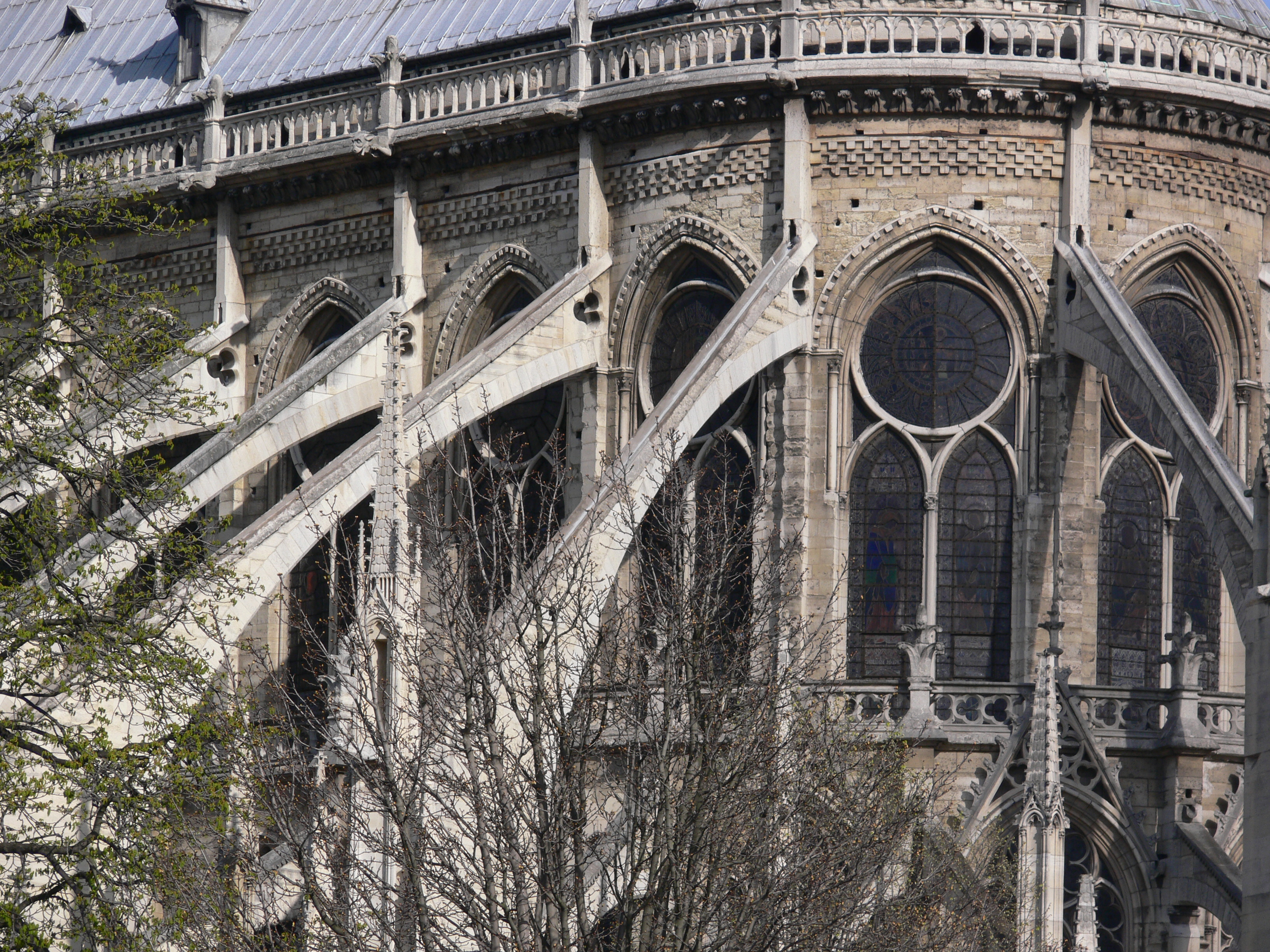Vaults of Heaven
Mitchell Laskowski and Marian Bleeke
.jpg)
Transept and crossing vaults, Notre-Dame Paris. Nick Thweatt, CC BY-SA 3.0 <https://creativecommons.org/licenses/by-sa/3.0>, via Wikimedia Commons
.jpg)
Vaulting is commonplace in Gothic style buildings such as Notre-Dame, but their creation was much more dangerous than other the parts of the structure. Walls were straight forward and easy to build, they just needed precision to keep them in line. The roof was usually built second to protect the builders and the building from the elements, while also providing a platform to stand on. These platforms were then used to build the vaults that otherwise would be almost impossible to make. Vaulting solved many issues in early churches that otherwise would not have a solution, but they also create new issues that needed their own solutions.
First of all, the vaults help keep the rest of the building safe from fire. Take for instance the fire at Notre-Dame in 2019, for the most part it was kept between the roof and the vaults where most if not all of the wood used in the building was located. The vaults stopped the fire because they are made of stone which does not burn easily. For the fire to spread to other buildings something had to give so that beams from the roof could fall into the rest of the church. In 2019, that was the spire. Its collapse caused the vaults in its path to crumble to the ground. In many images of the fire in 2019 you can see the floor with burnt wood and ashes but nowhere else is the fire spread. In this case we can see that the vaults were durable up until the final straw was dropped making the pressure too much to handle.
 |
| Removal of debris from the 2019 fire. Ministère de la Culture, CC BY-SA 3.0 FR <https://creativecommons.org/licenses/by-sa/3.0/fr/deed.en>, via Wikimedia Commons |
Vaults also create the illusion that the space inside the church is much larger than it actually is. This is caused by the vaulting being curved and giving the look of upward motion. This motion catches the eye because it is so grand. This illusion of space was important for Notre-Dame Paris and other churches that were built in cities and couldn’t expand their floor plans because they were hemmed in by other existing buildings. When the bishops and their builders wanted to expand on Notre-Dame in the 13th and 14th centuries, their only real choice was to fill in the spaces between the existing buttress towers that surround the building. The result was a ring of chapels that expanded the interior space of the building while keeping its basic footprint the same.
Vaults are tricky, though, because they create all sorts of complicated forces and pressures on the building. The downward force of gravity (everything is always falling down!) is turned into sideways forces by arches and vaults and these forces have to be resolved somehow or they will make the building fall down. Buildings like Notre-Dame Paris rely on flying buttresses to manage the forces coming off of their vaults. The “flyers,” arches that come away from the upper ways of the building, carry these forces away from the walls of the building to heavy buttress towers that use their weight to turn those forces downward and bring them safely to the ground. There is a raging debate among scholars about whether or not Notre-Dame originally had flying buttresses and whether or not they have always looked the way they do now. We do know the building’s vaults were redone in the 13th C and made even taller than they already were.
 |
| Flyers carrying forces away from the choir of Notre-Dame Paris. Andreas Praefcke, CC BY 3.0 <https://creativecommons.org/licenses/by/3.0>, via Wikimedia Commons |
There are other complications that come with vaults. Builders typically used lighter weight stones for vaults to reduce their weight and so the overall pressure that they create. But together correctly, these stones could cause the vaults to fall apart and the building as a whole could collapse. And putting up vaults was very dangerous and could lead to fatal injuries. Vault creation was dangerous due to use of planks and platforms that were suspended high above the ground with no safety net. Builders may have rushed through vault construction in order to try to limit these dangers and that could lead to poorly built and unsteady vaults.
Vaults are a key part of the Gothic style that was used in medieval churches. They protect the building from fires and they make the inside look more spacious. Or to make nd other destruction. They give the feel of a grand space that could last forever - like heaven which is the point of the whole thing. Heaven is supposed to everlasting and so churches needed to be the same way. The 2019 fire showed that the vaults of Notre-Dame were very durable in that it took an intense heat and great amount of weight and force to finally make them fall.
Sources:
Dany
Sandron and Andrew Tallon, Notre Dame Cathedral: Nine Centuries of History. University Park, Pennsylvania, 2020.
Comments
Post a Comment